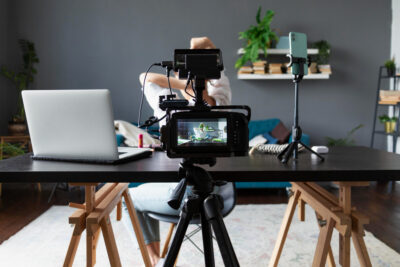Eye-friendly Best monitor for eye strain is screened with special functions that should help to protect or relieve the eyes while working in front of the monitor:
Most people are already aware that sitting in front of a PC for hours is not exactly beneficial for their health.
Back pain, neck pain, and headaches are the classic complaints everyone is talking about.
Unfortunately, our eyes are often neglected, but it is they who have to stare at the monitor all day long to achieve maximum performance.
Long work in front of the monitor creates problems
While working or playing computer games in front of the screen, our eyes work on absolute top performance, this is especially true for the computer gamer.
Experts speak of a “digital stress” to which our eyes are exposed. Visual disturbances, dry eyes, and tiredness are not infrequently the result.
It is therefore advisable to take regular and consistent breaks, even 5 minutes break every 2 hours can work wonders. Dry eyes, eye drops, or blinking more frequently can help.
Eye-friendly monitor – this is what you need to pay attention to
Health in the workplace is not only an increasingly important trend but also an important milestone for all workers or self-employed.
That is why many monitor manufacturers are now advertising features and functions that are intended to promote well-being during use.
1. Blue light filter
The most decisive factor that makes a PC screen easy on the eyes is the low-blue-light technology.
A so-called blue light filter is built into the monitor because the blue light from the LEDs in the background lighting is particularly demanding on the eyes. Many smartphones and tablets have already integrated these functions.
2. Screen size and resolution
The correct screen size is just as important, from our own experience we recommend a size of at least 20 inches (50.8 centimeters) (screen diagonal).
Because if the screen is too small, the eyes are very strained. 24 inches (60.96 cm) with a resolution of 1920 x 1080p (Full-HD) would be ideal for normal office work, here the eyes do not have to wander too much and the image appears razor-sharp.
With larger screen sizes it makes sense to aim for a higher resolution (or 3840 x 2160p UHD), otherwise, the picture could appear blurred. We explain here how to determine the optimal screen size for your monitor.
3. Solid refresh rate
In addition to the blue light filter, the screen size and resolution, the refresh rate is some of the decisive factors for the Best monitor for the eye
The refresh rate or refresh rate indicates in Hertz how many images per second a monitor can display. (Example: If a monitor has 240Hz, it can display up to 240 images per second.)
In general: the higher the refresh rate, the smoother the images appear, for example when playing a video. Most modern eye-friendly monitors have a refresh rate of at least 60 Hertz, so it is recommended to buy a monitor with at least 60Hz to protect the eyes.
Especially for gaming, however, we would like to recommend an eye-friendly monitor with 144Hz or 240Hz, as you want to experience the smoothest possible gaming experience. For office work, however, 60Hz is completely sufficient.









